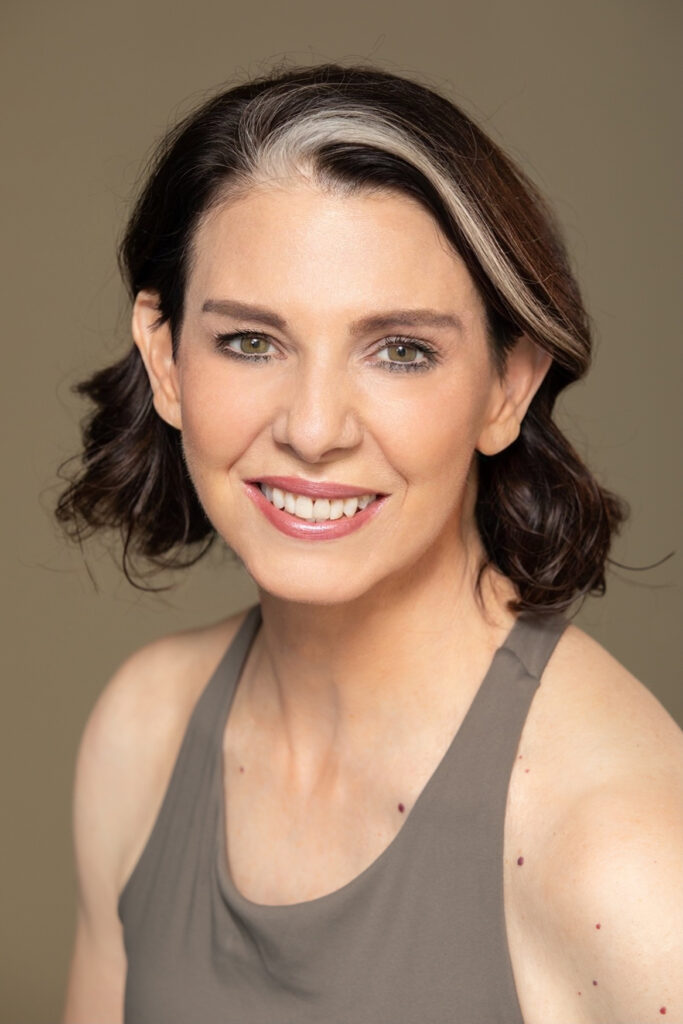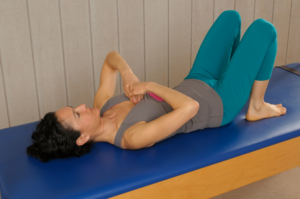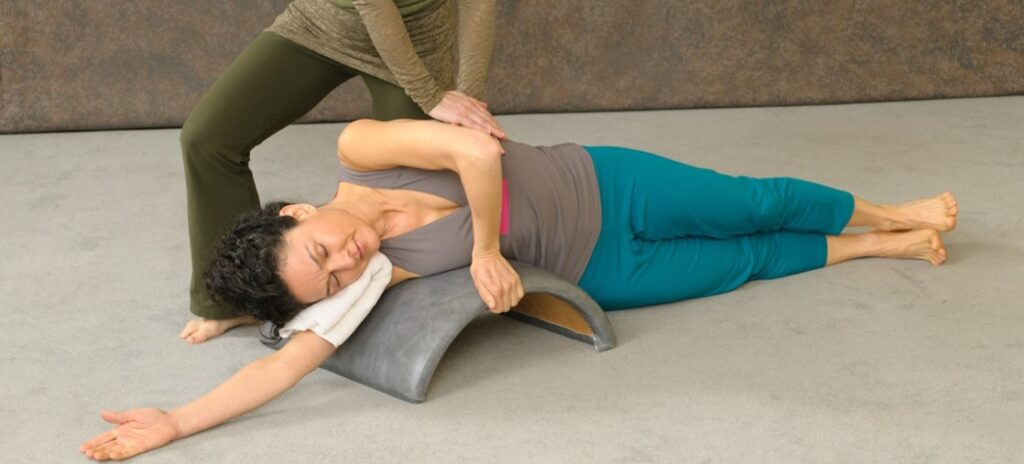Issue #411 – Wednesday, October 4, 2023
What are we IMPRINTING?
by Dr. Suzanne Martin
Imprinting is a beloved term used in Pilates, attributed to our Elder Eve Gentry. Imprinting is a subtle action involved with detailed movements of the vertebra in a supine position, where the imprinted motion seeks to “release” the individual vertebrae. In physical therapy terms, it would be called an anterior-posterior Grade 1 or 4 self-mobilization. Contemporary -minded Pilates allows liberty for interpretation. While mobilizing vertebral bones is one way of using the term imprinting, may I suggest others?
It is no secret that the fascia world concepts have inundated the field of Pilates, yoga, and exercise in general. How fortunate this age is to have new and exciting ways to look at not just fascial anatomy, but actual fascial movement, its connecting impact and coordination with the sensory and psychological self. Already being an advanced mover starting the journey over 25 years ago in cadaver studies, the glaring observation was how abundant the fascia was/is throughout a body, not just humans. Curiosity of fascia’s importance through observation of the outrageous amount of back-up tissue for infrastructure was immensely reassuring for my world, the mover population.
Thanks to interested surgeons, researchers, along with popular anatomists, a clearer, working knowledge of the structure, form, and function continues to emerge.
Perhaps not surprisingly, the actual skin, our first line of imprint, acknowledges both internal and external sensory nerve pressures that have direct influence all the way into our bones. Bones are not rocks, but actual organized living groups of cells. The fascial layers, beginning with skin, abut and connect layer after fascial layer to eventually continue into periosteum, the fascial lining of bone. What happens on the surface impacts the bones, and bones create functional motion from the gentle rotations of individual ribs to create breathe to the large motion excursion of the legs in Leg Circles on the Reformer.
Fascia has a basic organizational characteristic known as bio-tensegrity, a term gaining increasing popularity. What does it mean? The word breaks down to biologic tensional integrity, meaning tensioning connective tissue holds our bodies together instead of an architectural building block model. The tension is adjusted by our nervous system in a process called proprioception. Proprioception is the brain’s perception of where it is in space. Kinesthesia is the body understanding when and how it is moving. Functional joint stabilization occurs as a result of these two occurring during motion. (Panjabi, 1997)
The tensioning of the connective tissue of fascia gives what is called force closure of the joints, in particular the pelvic joints, which help to maintain verticality. Force closure helps so many of us that are more flexible, do not have perfect joints (as in spinal asymmetry or arthritis), or that have had babies, injuries, or accidents, in other words, most of the population.
As a long- time fascial manual therapist, I’ve incorporated the principles of fascial decompression and manipulation to my courses. Imprinting can be applied in both decompressive and manipulative ways in our work.
My courses are now all fascial-oriented Pilates applications. Self-touch, the original tactile cue, is the first form of imprint. One of my favorite exercises is the Sternal Mobilization. It helps those who have had chest wall surgery as in breast cancer, those with spinal asymmetry or scoliosis, or clients suffering from post-COVID or other breathing issues. When stiffness occurs in either the internal or external chest wall, shoulder motions become limited as well as breathing and is often accompanied by pain. These mat exercises will help Reformer exercises such as the Hundreds, Stomach Massage and Mermaid to be more balanced and effective.
With the client in a supine position, with the calves resting upon a Short Box, instruct them to place the thumbs into the armpits, touch their 3rd fingers together, place the fingers upon the sternum, and then release the thumbs. The fingers are now on a safe position of the sternum. The sternum has 3 bones: the manubrium, the gladiolus and the xiphoid. It is best to avoid the lowest bone of the xiphoid due to the ease of displacement.
Inhale, feel the sternum rise against the skin of the fingers. Then exhale, feel the bones descend and at the bottom, gently imprint the fingers three times (1-2-3), then release. Repeat several times. This motion affects the superficial fascia, the deep fascia and the internal rib cage fascia along with the fascial capsules of the lungs and heart. A modification for osteoporosis is to simply feel the finger weight and give no pressure at the bottom of the exhalation.
Another favorite is One-Lung Breathing created by our Elder Eve Gentry. The West Coast Baby Arc is my favorite tool for this one and is a usual beginning exercise for many of my sessions. This exercise helps re-shape the fascia of the trunk and is a great tool for clients with spinal asymmetry and cancer restoration.
Modify the neck and pelvic positions with towels and pillows as needed. Exert caution for those with osteoporosis. Modify by using only pillows underneath the ribs and minimize any pressure. Use only sensory tactile when in doubt.
Position the client with the stiff rib cage side down toward the arc with the client’s chest at the height of the arc. Place two flat hands on the side of the ribs with extended fingers to avoid touching the breasts. Inhale, feel the ribs rise, then when the client exhales, let your hand weight give gentle pressure downwards. Repeat three times more and repeat to the other side.
The next one is the Breath of Fire, adapted from the yoga exercise. It is a stronger exercise that potentiates not only the excursion of the respiratory diagram but affects all the diaphragms (cranial, thoracic, respiratory and pelvic) by tensioning all internal fascial compartments. It works best if the client sits on a firm surface like a chair or the Trap Table.
Keep the lips closed throughout the entire sequence.
First practice posterior lateral breathing using the hands to mobilize the rib cage. Inhale, expand the cage. Exhale, give some pressure to the ribs. Practice a few times. Then practice the “percussive exhalation.” Exhale strongly deepening, imprinting, the soft tissue from the pubic symphysis to the navel. Hold it tense for four counts. Finally, practice repetitive percussive exhalations. Try not to inhale between them yet let the passive return from the exhalation happen naturally. Yes, it may not be perfect but try to keep going to number 20.
Next, put the whole sequence together: Posterior inhalation for four counts, exhale hour counts, then one percussive exhalation with a four -count hold, perform twenty exhalations. Start again to complete three cycles only, to end with normal breathing. Notice the excursion of your breath now!
Here is a video to show you how!

Dr. Suzanne Martin is an international speaker, coach and mentor in the field of human movement and potential. She is CEO of Pilates Therapeutics, offering continuing education and maintains a private Pilates/Physical Therapy practice, Total Body Development. As doctor of physical therapy, exercise physiology and gold-certified Pilates expert, she authored three movement titles with Penguin Books and a fourth, Spinal Asymmetry, with Handspring Publishing. Her present Handspring project to be co-authored with Elizabeth Larkam, involves movement practices for connective tissue (hypermobility) conditions. Blending art and science in over 40 years of teaching experience, Dr. Martin’s passion is to help those with chronic conditions that require lifelong learning and management such as professional and recreational performance, foot issues, spinal asymmetries, connective tissue issues (hypermobility), women’s health and cancer survivorship. As performing arts specialist, she is a Wellness Consultant for Smuin Ballet for over 25 years. For further information and to see her new virtual hybrid teaching schedule, go to www.pilatestherapeutics.com.




